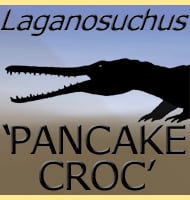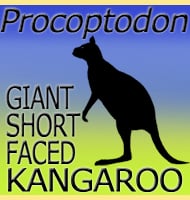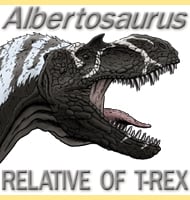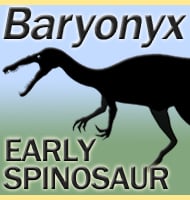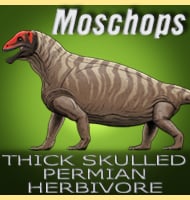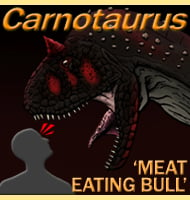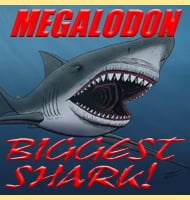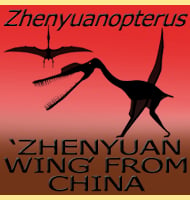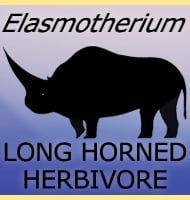In Depth
Remains of Ornithocheirus indicate that it was a medium sized pterosaur however Ornithocheirus has still had its total size grossly overestimated in the popular media, with the most outlandish suggesting that it had a wingspan of twelve metres.
The crests of Ornithocheirus were quite different from the majority of other pterosaurs in that they were on the tips of its beak as opposed to its head. These crests extended from both upper and lower jaws, with the upper crest extending towards the nostrils. Each crest was convex, giving them a semi-circular profile.
Ornithocheirus is thought to have lived in coastal regions where it would fly over the sea to look for fish. Ornithocheirus also had a different beak structure to other related species in that the beak narrowed towards the tip. This may have been to reduce water resistance while skim fishing over the surface of the water. There are also a smaller number of teeth which point vertical rather than out, perhaps as an adaptation to catching larger fish.A Taxonomic Headache
Many of the early discovered species of pterosaurs that hark back to the nineteenth century ended up with more species names than was necessary. Although most of these have since had their species listings cleaned up so that most if not all of the unnecessary species have been repositioned into the valid ones, Ornithocheirus still causes continuing debate amongst pterosaur researchers about which species are valid and which are not.
The problems begin with the first remains that were recovered from the Cambridge Greensand, a deposit that was once a sea bed. Because of this the remains, while numerous, were not only disarticulated and scattered, they were also eroded as well. Examining fossils that are not eroded is hard enough, and because no one knew for certain, the safe option was taken and they were assigned to the Pterodactylus genus, at the time of which was being treated as a wastebasket for any uncertain remains.
Although some of the remains had already been attributed to Pterodactylus most of the material was still unclassified, so Harry Govier Seeley undertook the task of identifying the remains. Seeley created the genus Ornithocheirus, meaning ‘Bird hand’ in the belief that pterosaurs were ancestral to birds. Although we now know that birds evolved from small theropod dinosaurs, this belief was quite common during the nineteenth century. Although no type species was set, Seeley did designate twenty-eight different species of Ornithocheirus from the available remains.
When these species were published in 1870, Richard Owen, by far the most famous palaeontologist of the day in Britain, immediately disputed the genus and species designation. This was on the grounds that he did not consider Ornithocheirus ancestral to birds, in fact Richard Owen did not even believe in evolution, and as such the ‘bird’ part of the name was not justified. This was not the only time that Owen would try to rename a species because it did not fit the name, he also tried to have the prehistoric whale Basilosaurus renamed because the ‘saurus’ part meant lizard when obviously whales are mammals. Owen created two new genera, Coloborhynchus and Criorhynchus, of which only Coloborhynchus continues to be recognised to this day. Seeley however rejected Owen’s renaming and designated the type species as well as adding another.
After this other researchers undertook the mantle of sorting out Ornithocheirus, although the number of species would rise to well over forty. In 1914, Reginald Walter Hooley tried to restructure the growing number of Ornithocheirus species. He did this on the basis of jaw shapes and in so doing he created the genera Amblydectes (blunt biter) and Lonchodectes (lance biter). However Amblydectes has since become a synonym of Coloborhynchus.
Brazilian pterosaur discoveries towards the end of the twentieth century revealed exceptionally well preserved specimens that almost immediately drew comparison to pterosaurs like Ornithocheirus and Coloborhynchus. However although many European researchers find the Brazilian pterosaurs to be similar, Brazilian researchers have disputed the addition of these remains to the European genera.
On top of all this the majority of pterosaur researchers acknowledge the fact that the original Cambridge Greensand specimens are so poorly preserved that it’s impossible to assign anything to them with a strong degree of certainty. So, unless a much better preserved specimen of Ornithocheirus can be recovered, ideally from Western Europe so that it can be more easily attributed to the Cambridge Greensand material, the current species of Ornithocheirus including the type specimen named after only a partial jaw may continue to have question marks hanging over them.
Further Reading
– Index to the Fossil Remains of Aves, Ornithosauria, and Reptilia, from the Secondary System of Strata, Arranged in the Woodwardian Museum of the University of Cambridge. – Annals and Magazine of Natural History. 5 (27): 225–226. – H. G. Seeley – 1869. – On the Ornithosaurian genus Ornithocheirus, with a review of the specimens from the Cambridge Greensand in the Sedgwick Museum, Cambridge. – Annals and Magazine of Natural History. 13 (78): 529–557. – Reginald Walter Hooley – 1914. – Taxonomic review of the Ornithocheirus complex (Pterosauria) from the Cretaceous of England. – ZooKeys (308): 1–112. – T. Rodrigues & A. Kellner – 2013.

